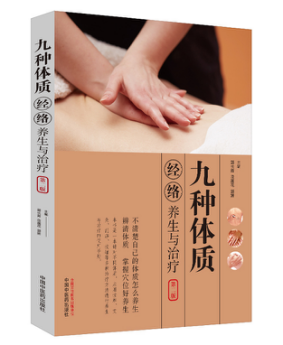 Yue Du Zhong Yi Daily 11:30 Pushes the Freshest
Yue Du Zhong Yi Daily 11:30 Pushes the Freshest
Authoritative and Quality Knowledge of Traditional Chinese Medicine
If you like it, please star it for me
Editor’s Guide
The theory of TCM constitution classifies the constitution into nine types, including Pinghe (Balanced), Yang Xu (Yang Deficiency), Phlegm-Damp (Tan Shi), Blood Stasis (Xue Yu), etc. We often hear people say they have a lot of phlegm-damp in their bodies. So, what exactly is a phlegm-damp constitution? How can one determine if they have a phlegm-damp constitution? This article will help you understand—
01Characteristics of Phlegm-Damp Constitution
Obesity and Edema:People with heavy phlegm-damp tend to be overweight, and those who are overweight usually have a phlegm-damp constitution, which is commonly seen in clinical practice. “Fat people have more phlegm-damp, while thin people have more internal heat.” This is because water flows downwards. Therefore, those with heavy phlegm-damp often feel heavy in their bodies, their steps are particularly heavy, and when they sit, they seem very cumbersome and are reluctant to move. This is due to phlegm-damp stagnating in the skin and limbs.
Fatigue and Lack of Energy, Mental Lethargy:People with a phlegm-damp constitution tend to react slowly, even blinking slower than others. They often have a blank expression and appear indifferent. Additionally, those with a phlegm-damp constitution frequently feel dizzy and heavy-headed. If a person reaches middle age and often feels dizzy, heavy-headed, and sleepy, this is a sign of transitioning to a phlegm-damp constitution. This is due to poor digestion of the spleen and stomach, leading to excessive phlegm-damp that obscures the clear yang. When these symptoms worsen after meals, or if one feels chest tightness and dizziness after eating, it is crucial to pay attention to whether phlegm-damp is retained in the body.

Sticky Mouth, or Thirsty but Unwilling to Drink Water:People with a phlegm-damp constitution often experience a peculiar phenomenon where they feel slightly thirsty but do not want to drink water. This thirst is not due to an absolute lack of water in the body, but rather because the body’s fluids have accumulated into phlegm-damp and are not functioning as they should, resulting in this mild thirst. Therefore, this thirst is only slight, and once they drink water, it exacerbates the accumulation of phlegm-damp in the body, leading to the strange phenomenon of being thirsty yet not wanting to drink.
Urine and Stool Characteristics, Tongue and Pulse:Individuals with a phlegm-damp constitution often have cloudy urine and sticky stools, making bowel movements difficult. The stool is not necessarily dry but very sticky and cannot be flushed away. The tongue is typically enlarged, and the tongue coating is relatively thick. These are signs of phlegm-damp evil lingering in the body, leading to excessive waste accumulation. The pulse is often slippery or soggy.
 02Why Does Phlegm-Damp Constitution Form?
02Why Does Phlegm-Damp Constitution Form?
Genetic Factors:Genetic inheritance is quite important, so it is common to see metabolic diseases with a significant family history, such as diabetes, hypertension, gout, and hyperlipidemia, in addition to lifestyle factors.
Long-term Preference for Salty Flavors:Excessive salt intake can lead to water-sodium retention in the body, which is a very important dietary factor that promotes and exacerbates phlegm-damp constitution.
Excessive Consumption of Cold and Frozen Foods in Youth:This can promote and exacerbate imbalances in constitution, such as increasing Yang deficiency, Qi deficiency, and phlegm-damp constitution. Eating too many cold foods harms the spleen and stomach, as “the spleen is the source of phlegm production, and the lungs are the storage for phlegm.” When the spleen and stomach are harmed, their ability to transform and transport is impaired, leading to moisture accumulation and phlegm production, resulting in a phlegm-damp constitution. This phlegm-damp constitution often coexists with Qi deficiency and Yang deficiency, and once a person becomes overweight, it can lead to severe obesity that is difficult to lose weight.

Long-term Staying Up Late:Long-term staying up late affects the liver and gallbladder’s ability to regulate, leading to Qi stagnation, liver Qi counterflow affecting the spleen, and the spleen losing its ability to function properly, causing water and dampness to accumulate in the body, thus forming phlegm-damp.
Overeating Rich and Fatty Foods, Lack of Exercise:Eating too much, binge eating, consuming cold and frozen foods, rich and fatty foods, and processed foods, along with a preference for sweet or salty items. Long-term lack of exercise and irregular physical activity, prolonged computer use, slouching, and poor breathing quality can lead to fatigue even without exercise. Skipping breakfast and eating late-night snacks, excessive alcohol consumption, and frequent use of air conditioning can all contribute to spleen deficiency, impairing the transformation and transportation of food and fluids, leading to dampness and turbidity retention.
 03What Are the Dangers of Phlegm-Damp Constitution?
03What Are the Dangers of Phlegm-Damp Constitution?
People with a phlegm-damp constitution are more prone to the following diseases:
High cholesterol, triglycerides, and blood sugar are closely related to phlegm-damp constitution. If not adjusted in time, it can easily develop into hypertension, diabetes, obesity, hyperlipidemia, gout, coronary heart disease, metabolic syndrome, cerebrovascular diseases, etc.
Individuals with a phlegm-damp constitution are also prone to cough, excessive phlegm, dizziness, gastrointestinal discomfort, vomiting, etc., leading to chronic bronchitis, bronchial asthma, pulmonary emphysema, chronic gastritis, chronic enteritis, and obesity.
 Health Preservation Books
Health Preservation Books
Understand the nine types of constitution and regulate related diseases through meridian therapy—


“Nine Types of Constitution Meridian Health Preservation and Treatment (Second Edition)”
Click the cover to enter Yue Yi Jia TCM Academy to purchase this book
Scan the code for a free trial read
This book uses the nine types of constitution as a framework, fully exploring the health-preserving effects of meridians and acupoints carried by the human body, teaching people how to use meridians and acupoints for health preservation according to their constitution, which aligns with the principles of TCM health preservation based on constitution and meets people’s desire to achieve health in the simplest way.
Previous Highlights
RECOMMEND
TCM Master Qin Bowei teaches you how to tonify Qi and nourish Yin with medication
Heavyweight! The new textbook for the “14th Five-Year Plan” of higher education in the TCM industry is grandly released!
What is the experience of “reversing aging”? Don’t miss the secrets of the ageless girl
 Copyright Statement
Copyright Statement
Some content of this article is selected from “Nine Types of Constitution Meridian Health Preservation and Treatment (Second Edition)” (published by China Traditional Chinese Medicine Press, edited by Guo Changqing, Duan Lianhua, Guo Yan), and the final interpretation rights belong to the original author. This article is recommended for publication by Yue Du Zhong Yi (WeChat ID: ydzhongyi).



 Click“Read the Original Text” to immediately purchase the recommended book Good articles must be “looked at”
Click“Read the Original Text” to immediately purchase the recommended book Good articles must be “looked at”

